-
 Bitcoin
Bitcoin $114400
1.32% -
 Ethereum
Ethereum $3499
2.20% -
 XRP
XRP $2.922
4.26% -
 Tether USDt
Tether USDt $0.0000
0.03% -
 BNB
BNB $752.6
1.53% -
 Solana
Solana $161.8
1.64% -
 USDC
USDC $0.9999
0.01% -
 TRON
TRON $0.3267
1.32% -
 Dogecoin
Dogecoin $0.1991
3.02% -
 Cardano
Cardano $0.7251
3.29% -
 Hyperliquid
Hyperliquid $38.32
3.36% -
 Stellar
Stellar $0.3972
7.58% -
 Sui
Sui $3.437
2.74% -
 Chainlink
Chainlink $16.29
3.65% -
 Bitcoin Cash
Bitcoin Cash $545.3
3.70% -
 Hedera
Hedera $0.2482
7.49% -
 Ethena USDe
Ethena USDe $1.001
0.03% -
 Avalanche
Avalanche $21.40
2.02% -
 Toncoin
Toncoin $3.579
1.56% -
 Litecoin
Litecoin $109.3
2.20% -
 UNUS SED LEO
UNUS SED LEO $8.951
-0.18% -
 Shiba Inu
Shiba Inu $0.00001220
2.75% -
 Polkadot
Polkadot $3.613
2.99% -
 Uniswap
Uniswap $9.173
3.78% -
 Monero
Monero $302.6
2.62% -
 Dai
Dai $0.0000
0.00% -
 Bitget Token
Bitget Token $4.320
1.52% -
 Pepe
Pepe $0.00001048
3.40% -
 Cronos
Cronos $0.1314
4.33% -
 Aave
Aave $259.4
3.54%
How to set MetaMask to automatically lock? Enhance wallet security
Enable MetaMask's automatic locking to enhance wallet security; it locks after inactivity, preventing unauthorized access and reducing theft risk.
May 18, 2025 at 11:00 am
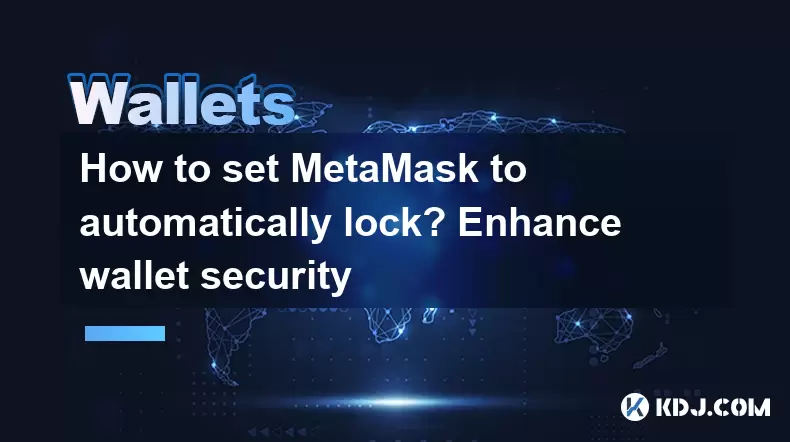
Setting MetaMask to automatically lock is an essential feature that enhances the security of your cryptocurrency wallet. By enabling this function, you ensure that your wallet locks itself after a period of inactivity, reducing the risk of unauthorized access. In this guide, we will walk you through the steps to set up automatic locking on MetaMask, explain why it is crucial for your wallet's security, and provide additional tips to bolster your wallet's protection.
Understanding MetaMask and Automatic Locking
MetaMask is a popular cryptocurrency wallet and browser extension that allows users to interact with the Ethereum blockchain and other compatible networks. One of the key features of MetaMask is its ability to automatically lock after a specified period of inactivity. Automatic locking is a security measure designed to protect your wallet from unauthorized access if you step away from your device or if it is left unattended.
Steps to Enable Automatic Locking on MetaMask
To enable automatic locking on MetaMask, follow these detailed steps:
Open MetaMask: Start by opening the MetaMask extension in your browser. You can do this by clicking on the MetaMask icon in the toolbar of your browser.
Access Settings: Once the MetaMask interface is open, click on the three vertical dots in the top right corner of the window. This will open a dropdown menu. From the menu, select Settings.
Navigate to Security & Privacy: Within the Settings menu, you will see several tabs. Click on the tab labeled Security & Privacy.
Set Auto-Lock Timer: In the Security & Privacy settings, you will find an option labeled Auto-lock Timer. This setting allows you to choose how long MetaMask remains unlocked after you stop interacting with it. Click on the dropdown menu next to Auto-lock Timer and select the desired time interval. Options typically range from 1 minute to 1 hour.
Save Changes: After selecting your preferred auto-lock time, make sure to click on the Save button to apply the changes. Your MetaMask wallet will now automatically lock after the specified period of inactivity.
Why Automatic Locking Enhances Wallet Security
Automatic locking is a critical security feature because it adds an extra layer of protection to your wallet. Here are some reasons why it is essential:
Prevents Unauthorized Access: If your device is left unattended, automatic locking ensures that your wallet locks itself, preventing others from accessing your funds without your knowledge.
Reduces Risk of Theft: By locking your wallet after a short period of inactivity, you minimize the window of opportunity for potential thieves to access your wallet.
Encourages Good Security Practices: Using automatic locking encourages you to develop a habit of securing your wallet regularly, which can lead to better overall security practices.
Additional Tips to Enhance MetaMask Wallet Security
While automatic locking is a significant step towards securing your MetaMask wallet, there are additional measures you can take to further enhance its security:
Use a Strong Password: Ensure that your MetaMask wallet is protected by a strong, unique password. Avoid using easily guessable passwords and consider using a password manager to generate and store complex passwords.
Enable Two-Factor Authentication (2FA): If available, enable two-factor authentication on your MetaMask account. This adds an additional layer of security by requiring a second form of verification before allowing access to your wallet.
Keep Your Software Updated: Regularly update MetaMask and your browser to the latest versions. Software updates often include security patches that can protect your wallet from known vulnerabilities.
Be Wary of Phishing Attempts: Always double-check the URL and authenticity of websites before entering your MetaMask credentials. Phishing attempts are common in the cryptocurrency space, and falling victim to one can lead to the loss of your funds.
Use Hardware Wallets: For long-term storage of significant amounts of cryptocurrency, consider using a hardware wallet in conjunction with MetaMask. Hardware wallets provide an additional layer of security by keeping your private keys offline.
Troubleshooting Common Issues with Automatic Locking
If you encounter issues with the automatic locking feature on MetaMask, consider the following troubleshooting steps:
Check Settings: Ensure that the auto-lock timer is set correctly in the Security & Privacy settings. Sometimes, the setting may have been accidentally changed or reset.
Clear Browser Cache: Clearing your browser's cache and cookies can resolve issues related to the MetaMask extension. To do this, go to your browser's settings, find the option to clear browsing data, and select cache and cookies.
Reinstall MetaMask: If the problem persists, consider uninstalling and reinstalling the MetaMask extension. Be sure to back up your wallet's seed phrase before uninstalling to avoid losing access to your funds.
Contact Support: If none of the above steps resolve the issue, reach out to MetaMask's support team for further assistance. They can provide guidance specific to your situation.
Frequently Asked Questions
Q: Can I change the auto-lock timer after setting it up?
A: Yes, you can change the auto-lock timer at any time by following the same steps outlined in the guide. Simply go to the Security & Privacy settings in MetaMask and adjust the Auto-lock Timer to your preferred interval.
Q: Will enabling automatic locking affect my ability to use MetaMask on multiple devices?
A: No, enabling automatic locking on one device will not affect your ability to use MetaMask on other devices. Each device's settings are independent, so you can set different auto-lock timers for each device if needed.
Q: What happens if I forget my MetaMask password after enabling automatic locking?
A: If you forget your MetaMask password, you will need to use your seed phrase to restore your wallet. It is crucial to keep your seed phrase secure and not share it with anyone. If you lose both your password and seed phrase, you will permanently lose access to your funds.
Q: Is it possible to disable automatic locking if I find it inconvenient?
A: Yes, you can disable automatic locking by setting the Auto-lock Timer to "Never" in the Security & Privacy settings. However, keep in mind that disabling this feature reduces the security of your wallet, so it is recommended to use it whenever possible.
Disclaimer:info@kdj.com
The information provided is not trading advice. kdj.com does not assume any responsibility for any investments made based on the information provided in this article. Cryptocurrencies are highly volatile and it is highly recommended that you invest with caution after thorough research!
If you believe that the content used on this website infringes your copyright, please contact us immediately (info@kdj.com) and we will delete it promptly.
- Cryptocurrency, Altcoins, and Profit Potential: Navigating the Wild West
- 2025-08-04 14:50:11
- Blue Gold & Crypto: Investing Disruption in Precious Metals
- 2025-08-04 14:30:11
- Japan, Metaplanet, and Bitcoin Acquisition: A New Era of Corporate Treasury?
- 2025-08-04 14:30:11
- Coinbase's Buy Rating & Bitcoin's Bold Future: A Canaccord Genuity Perspective
- 2025-08-04 14:50:11
- Coinbase's Buy Rating Maintained by Rosenblatt Securities: A Deep Dive
- 2025-08-04 14:55:11
- Cryptos, Strategic Choices, High Returns: Navigating the Meme Coin Mania
- 2025-08-04 14:55:11
Related knowledge
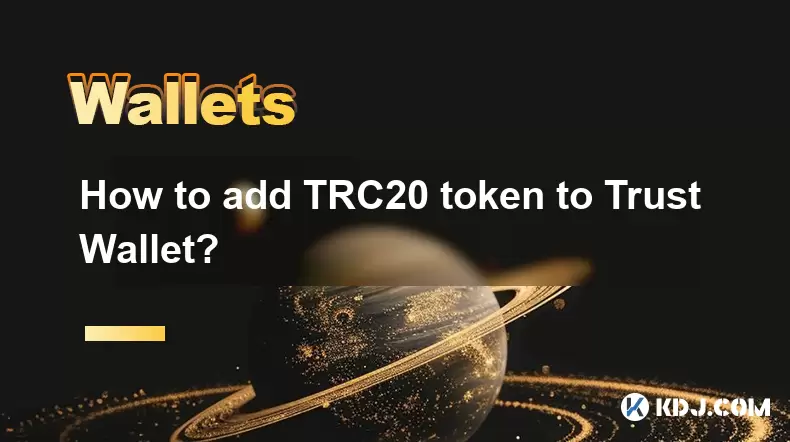
How to add TRC20 token to Trust Wallet?
Aug 04,2025 at 11:35am
Understanding TRC20 and Trust Wallet CompatibilityTrust Wallet is a widely used cryptocurrency wallet that supports multiple blockchain networks, incl...
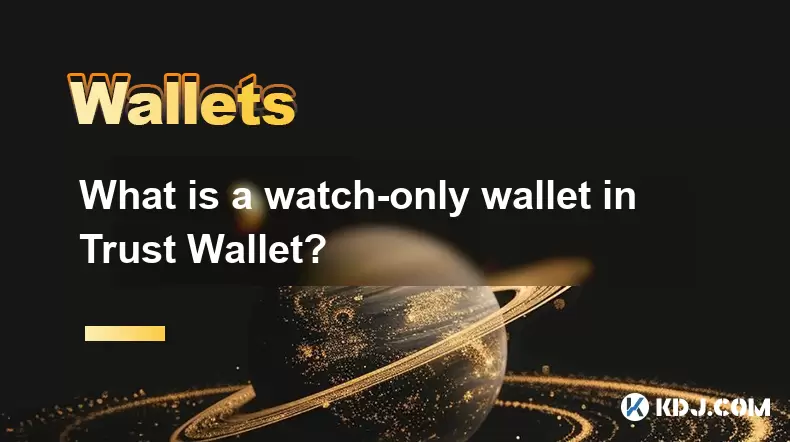
What is a watch-only wallet in Trust Wallet?
Aug 02,2025 at 03:36am
Understanding the Concept of a Watch-Only WalletA watch-only wallet in Trust Wallet allows users to monitor a cryptocurrency address without having ac...
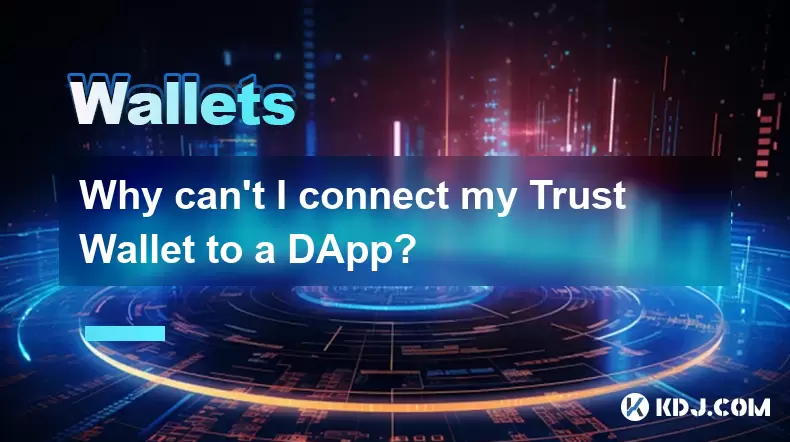
Why can't I connect my Trust Wallet to a DApp?
Aug 04,2025 at 12:00pm
Understanding DApp Connectivity and Trust WalletConnecting your Trust Wallet to a decentralized application (DApp) is a common process in the cryptocu...
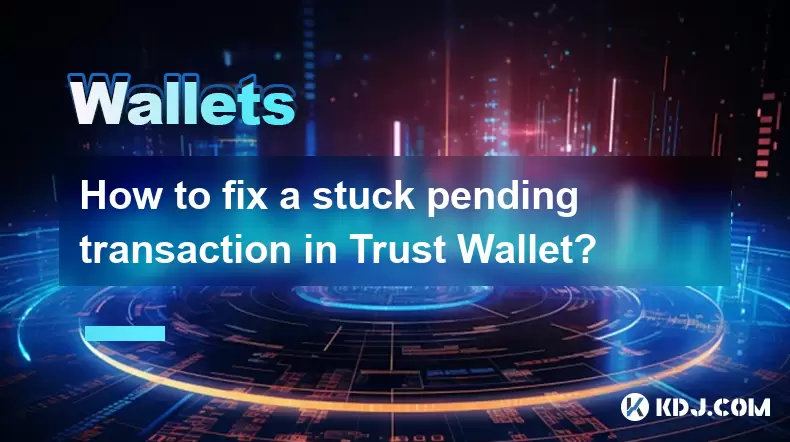
How to fix a stuck pending transaction in Trust Wallet?
Aug 03,2025 at 06:14am
Understanding Why Transactions Get Stuck in Trust WalletWhen using Trust Wallet, users may occasionally encounter a pending transaction that appears t...
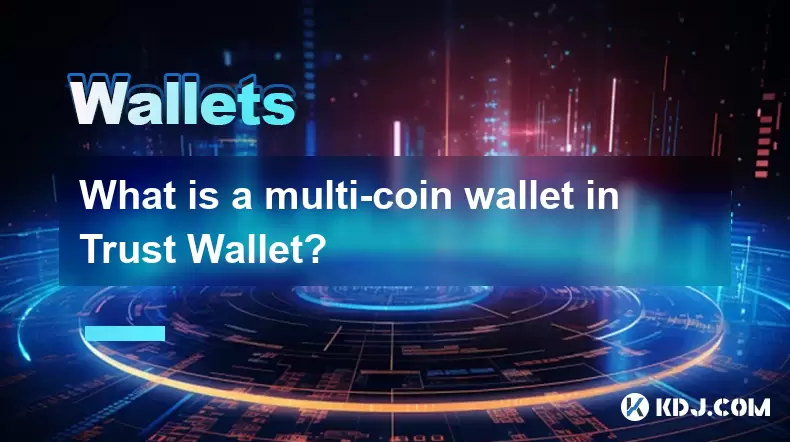
What is a multi-coin wallet in Trust Wallet?
Aug 03,2025 at 04:43am
Understanding Multi-Coin Wallets in Trust WalletA multi-coin wallet in Trust Wallet refers to a digital wallet that supports multiple cryptocurrencies...
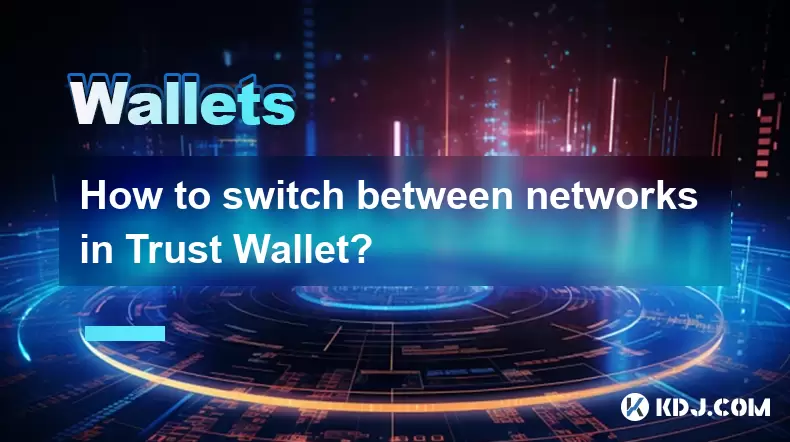
How to switch between networks in Trust Wallet?
Aug 02,2025 at 12:36pm
Understanding Network Switching in Trust WalletSwitching between networks in Trust Wallet allows users to manage assets across different blockchains s...

How to add TRC20 token to Trust Wallet?
Aug 04,2025 at 11:35am
Understanding TRC20 and Trust Wallet CompatibilityTrust Wallet is a widely used cryptocurrency wallet that supports multiple blockchain networks, incl...

What is a watch-only wallet in Trust Wallet?
Aug 02,2025 at 03:36am
Understanding the Concept of a Watch-Only WalletA watch-only wallet in Trust Wallet allows users to monitor a cryptocurrency address without having ac...

Why can't I connect my Trust Wallet to a DApp?
Aug 04,2025 at 12:00pm
Understanding DApp Connectivity and Trust WalletConnecting your Trust Wallet to a decentralized application (DApp) is a common process in the cryptocu...

How to fix a stuck pending transaction in Trust Wallet?
Aug 03,2025 at 06:14am
Understanding Why Transactions Get Stuck in Trust WalletWhen using Trust Wallet, users may occasionally encounter a pending transaction that appears t...

What is a multi-coin wallet in Trust Wallet?
Aug 03,2025 at 04:43am
Understanding Multi-Coin Wallets in Trust WalletA multi-coin wallet in Trust Wallet refers to a digital wallet that supports multiple cryptocurrencies...

How to switch between networks in Trust Wallet?
Aug 02,2025 at 12:36pm
Understanding Network Switching in Trust WalletSwitching between networks in Trust Wallet allows users to manage assets across different blockchains s...
See all articles

























































































